Historic Olive
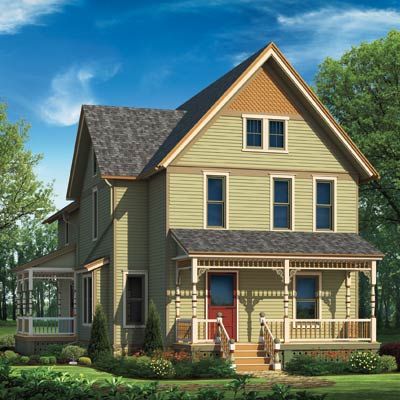
“Are you sure you want to get in the middle of a domestic dispute?” teased Jerry Lucianovic when he asked us to help him and his wife, Sondra, choose colors for their 1895 farmhouse in upstate New York. The one thing they agree upon is that the all-white house could benefit from a colorful paint job. But which hues? “I like some of the historic, muted khakis and creams,” says Jerry. “My wife is into more vibrant tones—she’s talked about a deep red—but I’m afraid to take the leap.”
To nudge them over the edge, we enlisted the help of architectural color consultant Bonnie Krims of Concord, Massachusetts. “This house has a lot of elements that lend themselves to different colors without it becoming flamboyant,” she says. Playing peacekeeper, she produced three palettes: sober olive for him, at right, and, on the following page, fun red for her and a welcoming blue, too. What does the happy couple think? “Holy cow—they are all extraordinary!” says Jerry. “I love the first one, and Sondra loves the red as well as the blue…now what?” Nice try, Jerry, but we’ll let you two work it out from here.
Shown: Dark trim colors are typical of Victorian-era paint schemes.
An All-White Exterior
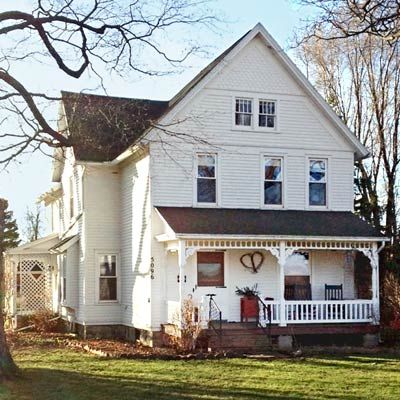
Jerry Lucianovic bought his 1895 farmhouse eight years ago because it has a sturdy, dry, stone foundation and solid bones. “It’s all straight and good, with chestnut woodwork, which you don’t see anymore,” he says. On the interior, he hasn’t had to do much more than paint. The exterior has always been white, but he would like to paint it in a way that highlights the architectural details. “You don’t even see the fish scales now because it all blends,” he says.
New Porch Skirt
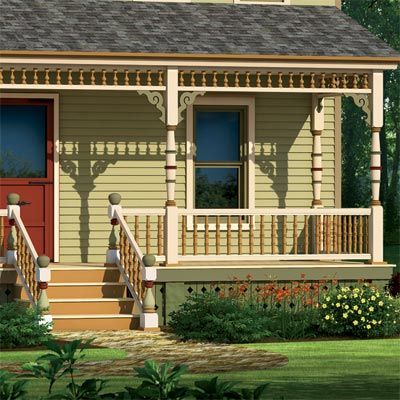
The porch gets dressed up with a custom skirt and a period handrail to reflect the owner’s intention to make upgrades this summer. “I love those skirt boards so much, I’m going to make them,” says Jerry Lucianovic.
Toned Down History
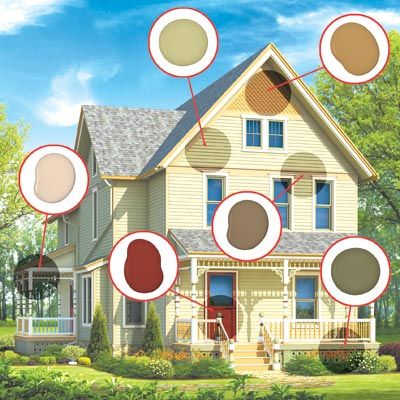
“The colors are historically informed but a little less saturated than the ochers, siennas, and umbers of the period,” Krims says. Gold pulled from the green siding highlights the shingled gable, and an earthy red—complementary to green—makes the front door pop.
Sherwin-Williams: Ruskin Room Green (clapboards), Mannered Gold (gable trim and shingles, balusters, spindles, stair risers), Paper Lantern (window trim, porch columns and rails), Fired Brick (door), Avocado (eaves, windows, porch brackets and skirt), and Dapper Tan (trim, porch fascia)
Bold Berry Red
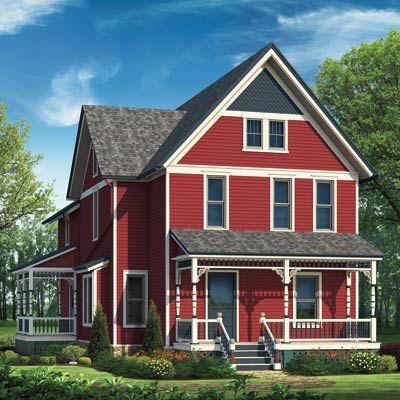
“Rather than a barn red or historic red, this color is much brighter,” says Krims. “That makes it more fun and upbeat than the olive option.” Contrasting the red with a berry-based blue in the same depth of tone and trimming the house in a creamy yellow create a refreshingly updated look.
A Coat of Many Colors
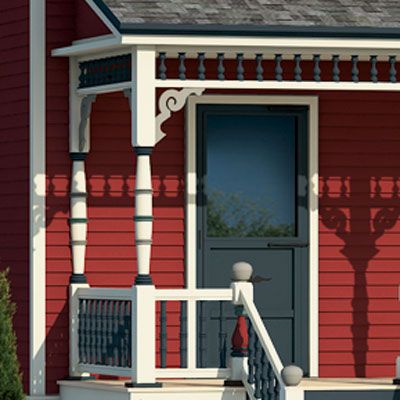
Most modern houses use two- or, at most, three-color schemes, but “it’s actually easier to balance a color scheme when you’re using four to six colors,” says Krims.
Red Scheme
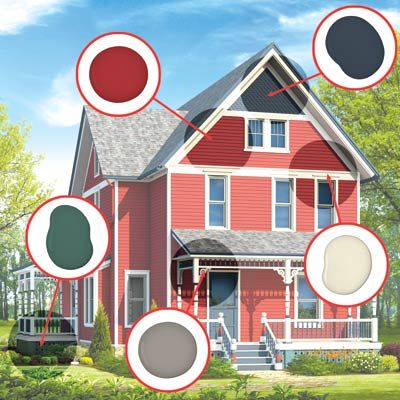
“I’ve put this on Victorian-era homes where I live, so I’ve actually seen it,” says architectural color consultant Bonnie Krims. “It looks amazing.”
Benjamin Moore: Raspberry Truffle (clapboards), Hale Navy (gable trim and shingles, door, balusters, spindles, stair risers), Lemon Chiffon (trim, porch columns and rails), Galveston Gray (eaves, windows, porch brackets), and Silver Pine (porch skirt)
Truly Cool Blue
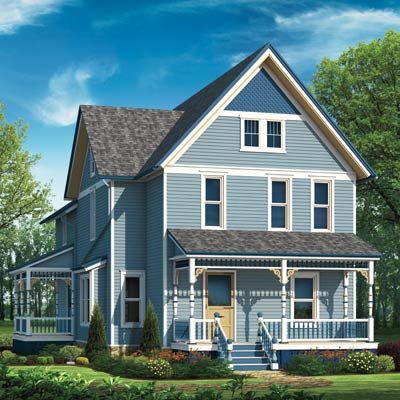
“Blue is America’s favorite color, and even though the owners didn’t ask for it, I wanted them to see how welcoming it is,” says Krims. Playing traditional blue (siding) against a modern indigo (gable, stair risers, balusters) is unexpected—as is the orangey-gold contrast (door, details).
Lanscape Friendly
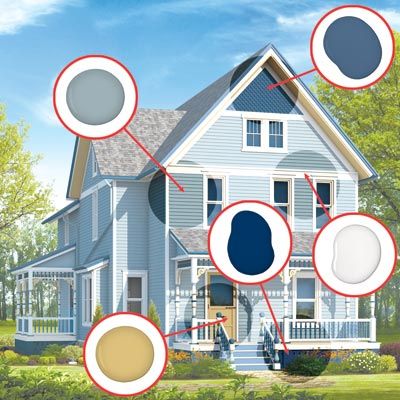
“Blue is a cool color, and cool colors recede into the landscape,” says architectural color consultant Bonnie Krims. “Light blue actually makes the house look and feel bigger.”
Glidden: Heritage Home (clapboards), Blueberry Hill (gable trim and shingles, balusters, stair risers), Egret (trim, windows, porch columns and rails), Midnight Haze (spindles, porch skirt), and Hemp Gold (eaves, door, porch brackets).
